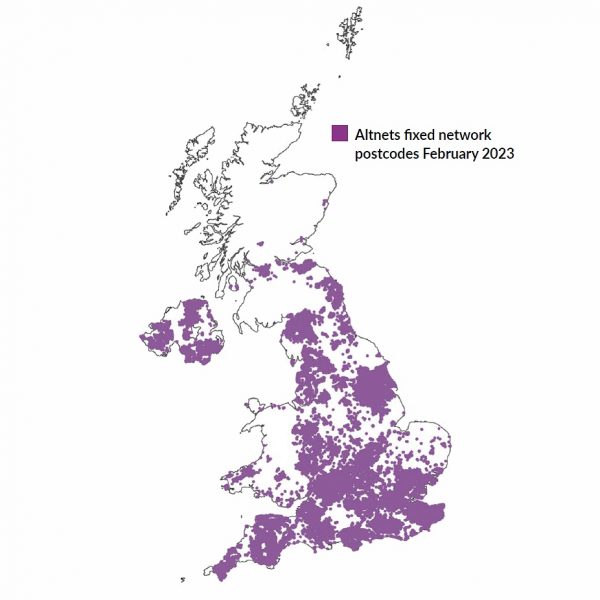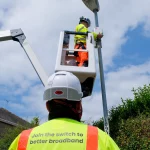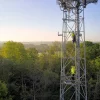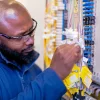Alternative Full Fibre ISPs Cover 8.2 Million UK Premises as Build Slows

The Independent Networks Co-operative Association (INCA) and Point Topic just published their 2023 report into the impact of alternative “full fibre” (FTTP/B) gigabit broadband networks, which reveals that AltNets grew their UK cover by 50.18% in 2022 to top 8.22 million premises (up from 5.46m in 2021). But the rollout slowed.
The figures above are lower than those stated in Ofcom’s Connected Nations 2022 report (here), which found that full fibre networks had passed over 12.4 million premises by September 2022 (42% of the UK). The difference stems from the fact that INCA’s report excludes Fibre-to-the-Premises (FTTP) deployments from the two largest operators – Openreach (BT) and Virgin Media (VMO2) – in order to focus on independent alternative networks like CityFibre, Gigaclear, Hyperoptic, CommunityFibre and many more (Summary of UK Full Fibre Builds).
The new report finds that FTTP from AltNets now covers a total of 8.2m premises (ready for service), which they say is approximately 25% of all UK premises. Furthermore, some 2.3m of those were in places classed by Ofcom as “Area 3” (i.e. mostly harder to reach rural locations). Take-up also stands at a respectable 20% (1.5 million live connections), which is up from 18.78% last year – this is somewhat expected given the early stage of build and how much of it is occurring in competitive urban areas.
Advertisement
However, it’s worth remembering that last year’s INCA report (here) included a future forecast, which predicted that AltNets would be delivering coverage to 11.6m premises by the end of 2022. But the actual figure of 8.2m for that period has fallen a fair bit short. Similarly, the 50.18% growth in premises passed seen during 2022 compares poorly with the 111% recorded for 2021.
The progress is still strong, but the above disparity reflects the challenge that AltNets currently face in converting their build ambitions into reality in the current market. At this point everybody has felt some strain due to a combination of issues, such as rising costs (build, leases etc.), aggressive competition from rivals (e.g. overbuild) and the related need to secure a viable level of take-up.
The above issues have a tendency to dampen the appetite of investors, slow builds and put pressure on jobs (example). As such, it’s worth taking this year’s forecast with a pinch of salt, since INCA are now predicting that AltNets will reach 14.23m premises by the end of 2023. However, if growth remains around 50%, then we think a figure of 12.3m is more likely, but there’s a chance it may slip further.

Advertisement
One other caveat is that these figures aren’t weighted against the potential for overbuild by rival networks and are thus more of a raw overall total from all operators. Furthermore, there can be a tendency for some operators to report technically unfinished or non-live builds (i.e. you can’t yet order a live service) as Ready for Service (RFS), which can cause complications when forecasting live coverage.
The Financial Impacts
Finally, the study estimates that AltNets currently have an intended capital expenditure (CAPEX) – from 2022 until the end of 2030 – of over £24.2 billion, with operational expenditure of at least £4 billion. But some of this may not be new money (e.g. re-announcements of existing funding) and related build commitments are frequently quite aspirational, thus such figures should be treated with a heavy degree of caution.
Taking this private sector investment together with the government’s £5 billion Project Gigabit commitment, as well as other planned full fibre investments (e.g. £4.5bn on VMO2’s Nexfibre project and £15bn on Openreach) until 2030, pushes the overall total to £49bn. The vast majority of that is private funding. Politicians that seek to nationalise broadband might want to take that into account when setting future policy.
Some previous studies have predicted that it would cost £30bn to cover the UK in full fibre lines, but those studies didn’t factor in the unknown quantity that is competitive overbuild (i.e. multiple operators spending money to build rival networks in the same areas).
Advertisement
However, INCA doesn’t miss an opportunity to warn that Openreach’s proposed discount to their wholesale FTTP prices for UK ISPs (aka – Equinox 2), could be hugely damaging to AltNets deploying rival networks (here). The report again notes that over 2.3m properties in harder-to-reach rural areas have also been passed by altnet fibre networks, which is said to be “something Ofcom assumed was not possible in its last market review“.
INCA CEO, Malcolm Corbett, said:
“As this year’s survey results clearly show, Ofcom must assess the potential impact of Equinox 2 on Area 3. Equinox 2 is a live and pressing concern. It has the potential to unfairly foreclose the wholesale market, including in areas where Ofcom mistakenly thought only Openreach might get to, but where it is abundantly clear that Altnets are investing significantly and where they are already making full fibre broadband services available to millions of people.
Ofcom must not put this investment at risk and jeopardise the digital transformation of small towns and rural areas in the UK.”
However, in terms of the issues that AltNets think are most pressing to tackle, Equinox 2 actually follows a few places behind the leading concerns. For the second consecutive year, the top two concerns for independent network operators continued to be planning and street works delays, followed by Project Gigabit related challenges. Overbuild by non-incumbent suppliers came in third place.
Interestingly, access to finance is still way down the table, which is surprising given how vocal some operators and analysts have been about the growing challenges of attracting fresh investment in today’s difficult climate.

Overall, altnets are continuing to have a significant impact across the United Kingdom and that is set to continue for the foreseeable future, which is one of the reasons why major operators are ramping-up their own builds (competition).
The fact that AltNets have so far scooped all of the initially awarded build contracts under the Government’s new £5bn Project Gigabit scheme is also promising, but that may change if some of the associated providers start to struggle and the climate for consolidation continues to rise. Politicians will be quick to swoop on any hint of drama, so there are risks for the government in courting lots of relatively young AltNets.
Just to recap. The goal of Project Gigabit is to help make gigabit-capable networks available to at least 85% of UK premises by the end of 2025 (commercial deployments alone should hit about 80%+) and then “at least” 99% by 2030. At the time of writing, around 75% of UK premises can already access such a network and commercial operators alone are widely expected to push this over the 80% mark.
Mark is a professional technology writer, IT consultant and computer engineer from Dorset (England), he also founded ISPreview in 1999 and enjoys analysing the latest telecoms and broadband developments. Find me on X (Twitter), Mastodon, Facebook, BlueSky, Threads.net and Linkedin.
« Netflix Warns UK Broadband ISPs of Password Sharing Crackdown
Ookla Study Finds UK Home WiFi Speeds Lag Wired Ethernet »





















































So to take the national picture, 100% national FTTP would cost £30bn, nationally we are well on track to spend £30bn, but because of the inefficiencies of overbuild and value-destroying competition we’re not going to get 100%. Instead hundreds of thousands of hard to serve properties still on copper by 2030, whilst some people already have the choice of four different FTTP or gigabit options. And even that choice may not last as altnets consolidate or fold.
The whole FTTP/gigabit programme has been a mess, and its been a mess because politicians are obsessed by the concept of markets delivering efficiently. If only the clowns of Westminster understood.
Commercial competition is often messy, but it’s worth noting that all of this build has also helped to nudge Openreach and Virgin Media into conducting major upgrades and deployments of their own. But most of this was never going to solve rural areas as those often fall outside of private sector viability models, which is why state aid programmes like Project Gigabit exist.
At the end of the end of the day, at least it’s private companies paying for the vast majority of this and not all of us. The more they can all collectively deliver, the better. One other upside is price, since aggressive competition is helping to keep FTTP prices low at many operators and at a time when other prices have surged.
Communists see other people’s money as their own
Fact is that it is always better when the taxpayer is not involved. There are far too many things that govt is not supposed to do but is doing it anyway squandering tax money because there is zero incentive to save money
It is a mess isn’t it. I live in a small town near the south coast. Not on any Openreach plans. Trooli have installed to part of the town but seem to have skipped my 70s estate entirely (50 year old ducts too expensive at a guess). Giganet are spending a fortune installing but seem to be priortising the village to the south and a smaller town to the north where trooli and openreach are already FTTP enabled (overbuild). Its not just my town like this either – A colleague lives on a road in another local even larger town and they have enabled 75% of the street and just stopped just before his house and told him they have no plan to cover him (again no sign of openreach). The whole thing is a lottery if you don’t live in the right area or sometimes even house on a road. There are hamlets of 10 or less properties in my area with openreach fibre so being rural doesn’t seem to impact anything either. I suspect there will be a large number of urban properties that take 20 years to get fibre just because they are more complex to install than a rural property.
Alt Nets will always struggle as the incumbent Openreach will have most of the market and there is no particular reason for people to move from an Openreach ISP
The only reason they might is if the Alt net gets to the market first but even then it will only pick up a few customers. Alt Nets are closed networks as well you have to have them as your ISP. Many as well do not offer a phone service. Most will be happy with just a mobile but some will not
Most alt nets do not have the benefit of scale neither
The government should have learned from the Cable TV mess but appear not to have
They should have laid down common standard for FTTP and probably franchised it by Region. So you would have two wholesale providers of FTTP
That would have speeded up the roll out and reduced costs. To late now though
WE will have another cable TV type mess with the Alt nets slowly considering down to one or two altnets
This is misleading as the report includes Fixed Wireless & VDSL in their definition of Fixed Networks but present this as FTTP
“ Technologies – in terms of fixed networks, we cover full fibre-based network deployments, fibre-to- the-premises or home (FTTP/H) and fibre-to-the- building (FTTB) as well as small amounts of legacy VDSL. Fixed wireless access (FWA) deployments are included where we have been able to gain information although this is currently sparse.
This report does not cover satellite, 4G, white space or leased line infrastructure.
l Bandwidth – we focus on symmetric gigabit capable networks. While there is some legacy VDSL in
the portfolio of several operators it is a small and decreasing percentage as new deployments are now exclusively FTTP/B. However, coverage of FWA technology does include sub-superfast bandwidths.”
The wireless figures are separated out, and I’m not sure if they included VDSL data in the FTTP totals, but even if they did, it would be positively miniscule as there’s next to no SLU FTTC left in the market from AltNets (i.e. no meaningful impact on the total).
VDSL is irrelevant. However including FWA coverage (which is generally highly questionable at premise level) in a report which itself makes a direct comparison to Openreach 10M is plain misleading- particularly if much of that FWA is naturally in Area3
As I said, the FWA figures are separated out from the FTTP/H/B totals. You can only find one FWA figure and it’s in the small print.
Look at Fig4a
That shows a massive level of deployment in 12months which isn’t true – if overlay with Thinkbroadband any altnet FTTP layer it is vastly different – turn in FWA in TBB and it is a very close match. However there has been near zero FWA growth in south west in that time with Airbands FWA and wildanet FWA predating that period.
I’m only talking about the FTTP specific data, as covered in our article above, which is what I thought you were referring to.
I can’t see them making the distinction between FTTP/H, FWA (& VDSL) at all in their headline comparisons – if anything they are adding old FWA as new FTTP in this year’s conclusions
Presumably only INCA or Point Topic can explain but this looks like an attempt to factually mislead.
Each page on https://labs.thinkbroadband.com/local/ has an Alt-net figure. So UK 22.25% circa 7 million FTTP RFS. Where it gets fun is number of ports deployed is higher due to overlaps between some of the alt-nets e.g. look at Clacton on Sea
Alt-net reconciliation of claimed RFS versus clearly available is a very slow task, and some had a big burst of activity in early 2023.
Andrew, as the Point Topic mapping partner how is there such a difference between figure4a in the Inca report &
https://labs.thinkbroadband.com/local/broadband-map#7/50.219/-3.867/altfttp/
What does Thinkbroadband show for AltNet FTTP in Ofcom Area 3? The April update had this at 13.2% / 1.247M, but INCA claiming 2.3M? Seems like a massive difference
Cannot account for the difference as have no specific hand in producing the report, there is likely to be some of my work as data in it. Work on my side is producing everything you can see, i.e. it is transparent.
One variation might be in KCOM is counted as an altnet in INCA figures
Very happy to be told of large areas missing from my data, but a lot of the last weeks stuff has been overlapping, and how that is handled in the INCA figures is another possible reason for differences.
Is there a “supplier of last resort” scheme in place to take over rural lines if the sole Altnet operating them fails to gather pace? Will small communities be cut-off if a net supplier fails?
I suppose the problem is that unlike energy, there are separate physical networks. It’s not just a matter of a new name on the bills.
What inducement would Openreach (as the most likely saviour) have to take over someone else’s network when it may not be built to their standards or uses incompatible equipment. It would not be reasonable for them to be forced into it.
And that’s before the nitty gritty like people with static IP addresses or speeds that the SOTR doesn’t offer. Even the ISP offerings themselves may be different.
There should be Full Fibre Addition Tax (FFAT) at £1 for everyones in UK to help to build FTTP build faster
No point. The main constraint is resource and supplies
That’s true for now, but soon the main constraint will be economic gravity, as optimistic business plans find themselves running on air, Wile E. Coyote style. Briefly.
Is there a more proper list of who actually claims to serve each postcode area. My parents’ place is in a big purple splodge but to my knowledge no one except Openreach actually has anything there – only promises of future builds. Not even fixed wireless.
Openreach has a Postcode database covering their roll out. I would not particularly rely on the accuracy of it
You can try the Better Internet Dashboard web site. How accurate it is I o not know.
Most alt nets have a Postcode checker on their web site so that another approach
https://labs.thinkbroadband.com/local/postcode-search everything will appear if you search there.
If yours is missing or its wrong then always happy to correct/add/remove accordingly. Feedback is crucial to keeping things correct and rapid turn around on those too.